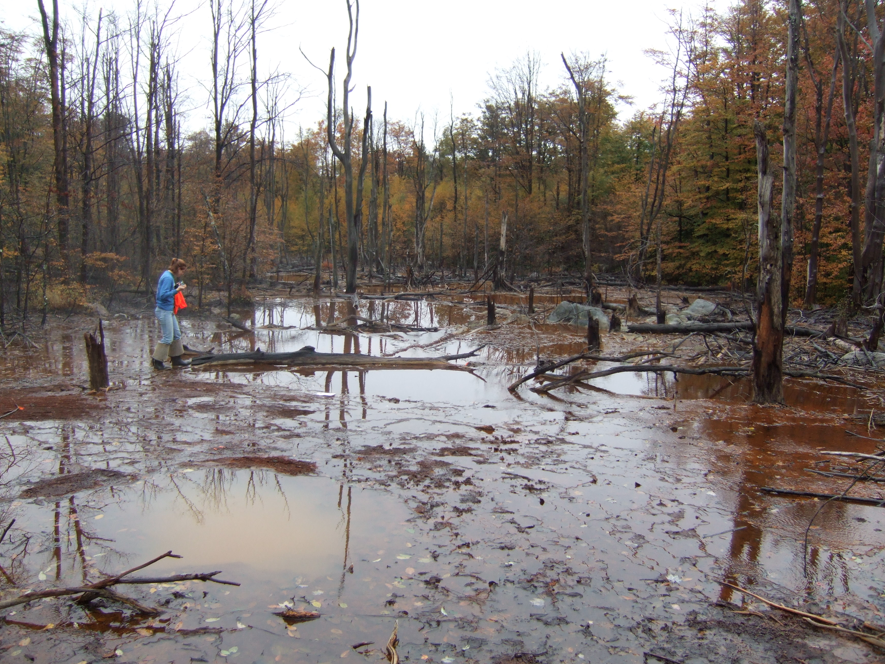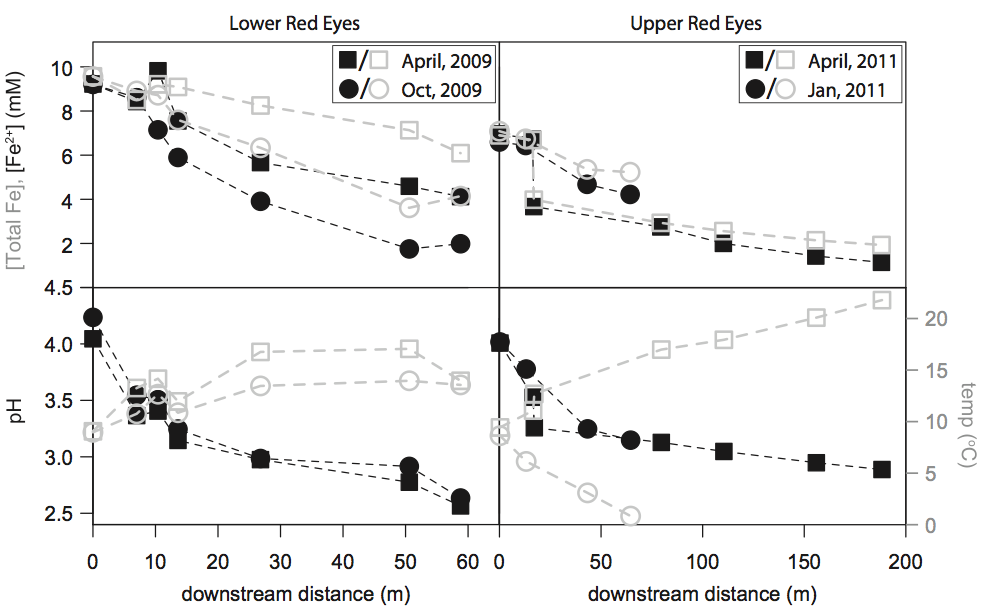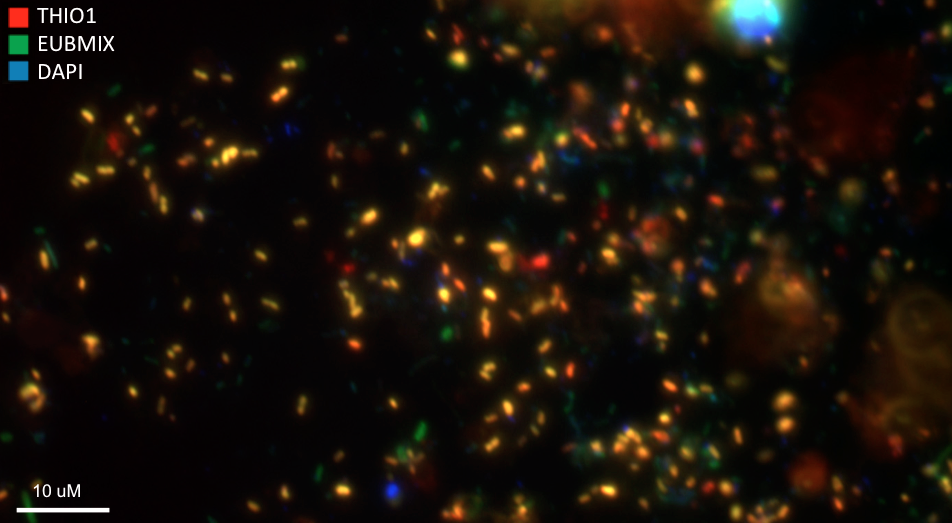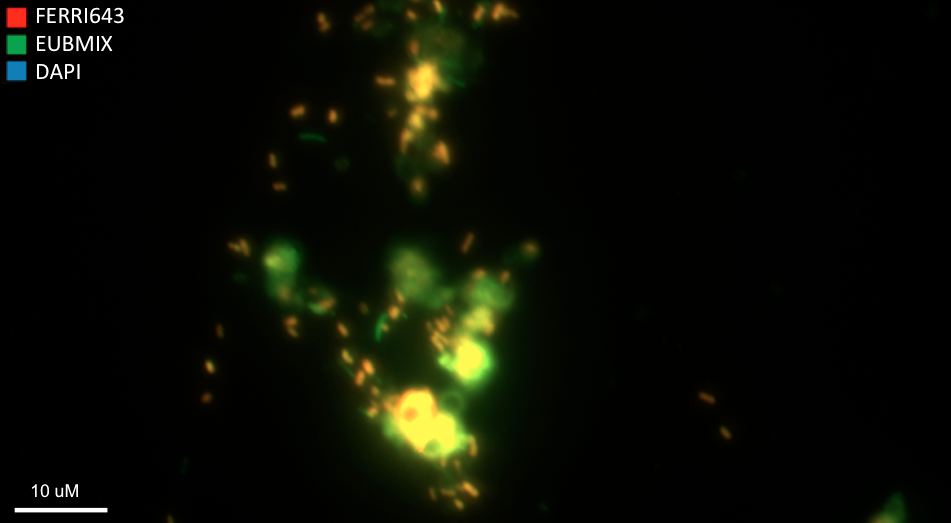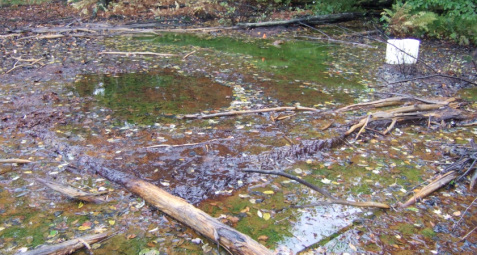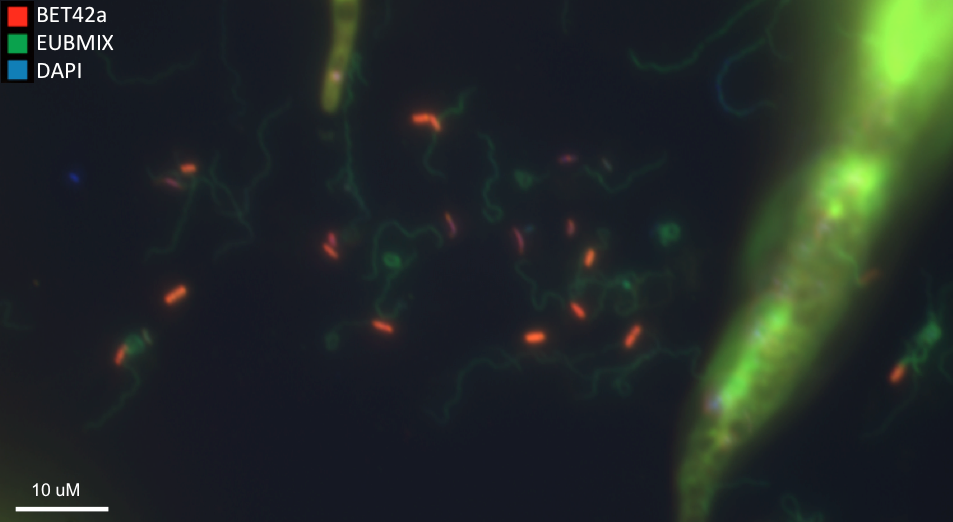Acid mine drainage
Acidic coal mine drainages in Pennsylvania. Lower Red Eyes, Somerset County (left) and Porcupine Run, Elk County (right)
Fluorescence in situ hybridization photomicrographs of microbial communities in acid mine drainage sediments, showing populations of Acidithiobacillus spp. (left) and Ferrovum spp. (right) in orange
Green biofilms (left) composed of the Euglenid algae Euglena mutabilis and associated bacterial populations. Spirochaete-like cells and Betaproteobacteria (FISH image, right) co-occur with Euglena mutabilis (large cells) at a site in Pennsylvania.
|
Acid mine drainage from abandoned coal mines is a severe environmental problem in Pennsylvania. Passive treatment systems, such as the one pictured at the right from Blair County, PA, are often installed to treat the discharge.
Acid-loving microorganisms, like those in the fluorescent photomicrographs above, can play an important role in acid mine drainage treatment. Microorganisms can oxidize and remove iron under acidic conditions, and this biological process of low pH iron oxidation is one possible solution for more cost effective and long-lived remediation technologies. |
